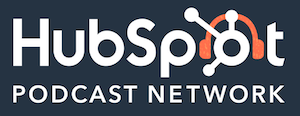Exploring The Art Of Messaging written by John Jantsch read more at Duct Tape Marketing
Marketing Podcast with Henry Adaso
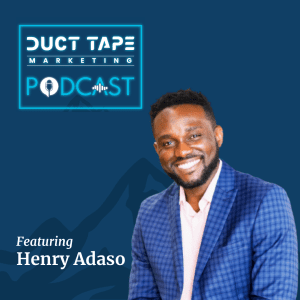 In this episode of the Duct Tape Marketing Podcast, I interview Henry Adaso. Henry Adaso is an award-winning marketing leader with over 15 years of experience. A former music journalist, he is a natural storyteller and an innovative marketer. He is currently head of marketing for CEMEX USA and the author of three books, including his latest The Art of Messaging: 7 Principles of Remarkable Messages (Or How to Stand out in a Noisy World): a practical guide that helps marketers and entrepreneurs clarify their message and captivate their audience.
In this episode of the Duct Tape Marketing Podcast, I interview Henry Adaso. Henry Adaso is an award-winning marketing leader with over 15 years of experience. A former music journalist, he is a natural storyteller and an innovative marketer. He is currently head of marketing for CEMEX USA and the author of three books, including his latest The Art of Messaging: 7 Principles of Remarkable Messages (Or How to Stand out in a Noisy World): a practical guide that helps marketers and entrepreneurs clarify their message and captivate their audience.
![]()
![]()
Key Takeaway:
Messaging is a strategic element of marketing, which can be elevated to the level of art. To create effective messaging, businesses should understand the essence of their product, service, or their brand and what makes them different from others in their industry. It should focus on the customer, not the company, and should show how the customer will be transformed and helped by the product or service through storytelling that connects with them.
Questions I ask Henry Adaso:
- [01:40] What’s been your entrepreneurial journey that kind of brought you to this point?
- [02:43] Why you chose to call it the art of messaging? Why do you feel it is elevated to the level of art?
- [03:54] Where do you first send somebody to look for like “where is your message”? You know, something that’s gonna really makes a difference?
- [05:33] How important is it to understand the problems you’re solving for your customers?
- [07:15] How do you turn something kind of sexy that people don’t think it is? Let’s say cement for example.
- [09:29] So you have a framework called: BEST, can you explain it?
- [13:50] How do you know you’ve nailed it with the ideal client when you’re trying to impact?
- [15:15] How important is it for an organization to have a central message or a core message?
- [16:54] So you have a couple of exercises that business owners or organizations can use. Can you explain The Messaging Tower?
More About Henry Adaso:
- henryadaso.com
- Connect on LinkedIn
- Follow Henry on Instagram
More About The Agency Certification Intensive Training:
- Learn more about the Agency Certification Intensive Training here
Take The Marketing Assessment:
- Marketingassessment.co
Like this show? Click on over and give us a review on iTunes, please!
John Jantsch (00:00): This episode of the Duct Tape Marketing Podcast is brought to you by Creative Elements hosted by Jay Klaus. It’s brought to you by the HubSpot Podcast Network. The audio destination for business professionals creative elements goes behind the scenes with today’s top creators. Through narrative interviews, Jay Klaus explores how creators like Tim Urban James Clear, Tory Dunlap and Cody Sanchez are building their audiences today. By learning how these creators make a living with their art and creativity, creative elements helps you gain the tools and confidence to do the same. In a recent episode, they talked with Kevin Perry about how he goes viral on every single platform. Listen to creative elements wherever you get your podcasts.
(00:52): Hello and welcome to another episode of the Duct Tape Marketing podcast. This is John Jantsch. My guest today is Henry Adaso, fueled by Coffee and Hip Hop. Henry is an award-winning marketing leader with over 15 years of experience, a former music journalist. He’s a natural storyteller and innovative marketer. He’s currently the head of marketing for CMEX USA and the author of three books, including his latest that we’re gonna talk about today, The Art of Messaging – Seven Principles of Remarkable Messages (Or How to Stand Out in a Noisy World). So, Henry, welcome to the show.
Henry Adaso (01:30): Thank you for having me, John.
John Jantsch (01:31): So going through your background, I feel like you have a very colorful journey to how you got to hear
Henry Adaso (01:46): Yeah, John, absolutely. Colorful is the right word. I call myself an accidental marketer because I didn’t know that I was going to end up in marketing when I was a young boy in high school. I was the kid who used to annoy all of his friends by making my own kind of handwritten newsletter and then forcing my friends to endure my newsletter. So I, I always thought I was going to become a publisher, but to somewhere along the line, I noticed that they were kicking publishers out of the building because of this thing called the internet. And so I pivoted to digital marketing, and what I quickly realized was that a lot of the same skills that I had developed writing my own book when I was a kid and writing newsletters translated to marketing because it’s ultimately about storytelling. And so today I work as a marketer and I love it.
John Jantsch (02:34): So, so, you know, messaging obviously is a key part, strategic element of marketing. I, I’m, I agree with you, but I’d love to hear your take on why you chose to call it the art of messaging. Why do you feel it it is elevated to the level of art?
Henry Adaso (02:52): That’s a great question. I think that people are intimidated by messaging it. It’s something that is often thought as a reserved for a select few copywriters, marketing gurus, great communicators. But it’s really an art. It’s an art in the science, but it’s primarily an art. And it can be taught, it can be learned. And what I realized looking at a lot of different brand messages is that they tend to have certain things in common. They have certain attributes in common. There’s a pattern that occurs. And if you study that pattern and try your best to recreate that in your product or service, if it works, it has to work. It’s not about something that doesn’t work. If you have a product that truly solves a problem, you can learn from the best brands on how to message in a way that truly resonates with your audience.
John Jantsch (03:45): Where, you know, if somebody comes to you and says, oh, we’ve got this company and we’ve got, you know, we’ve been around for X amount of years, and we just feel like we’re copying what everybody else in our industry does, I mean, where do you first send somebody to look for, like, where is your message? You know, like where is it hiding? You know, the secret sauce that’s gonna really make a difference.
Henry Adaso (04:04): There’s a great quote by Michelangelo that says, every block of stone has a sculpture in it, and it’s the job of the sculptor to find it. So every brand, no matter the industry, whether you’re B2B or B2C, there’s something that is interesting about your brand. And sometimes you may have to dig a little bit deeper, maybe do some research, talk to people who’ve been there a little bit longer. But you really have to try to understand the essence of your product or service or your brand. And that’s where I would begin. So for example, there’s a sock company called Bombas, and they sell socks, which, you know, could be consider the commodity, but they’re very successful because their product is tied to this idea that the, one of the most essential pieces of clothing that, that you really need is something that keeps you warm. So like socks, right? So every time you buy a pear, they gift one to, uh, somebody in need. So that’s a story, and that’s something that’s interesting that makes them, it kind of takes them beyond the idea of just being a soft company to now something bigger than that. And that’s really where you start. What is the essence of your brand? What is the thing that really makes you a little bit different from the others?
John Jantsch (05:17): You know, one of the things that I find is I think there are a lot of companies out there that they are unique. They are doing something different. Their customers, you know, stay with them because they are doing something different, but they still tend to talk about what they sell. How important is it to understand the problems? You’re, so you really solve
Henry Adaso (05:58): I’m a marketer and I’ll be the first to admit, we love talking about ourselves.
John Jantsch (06:50): Yeah. And obviously with a Title seven principles, you know, we’re gonna break down a little bit of, of framework, but I’ll tell you a question I get all the time, and I’m sure you do as well when you talk about this topic, is the company that says you, you used bombass, you know, sells socks, which is a commodity. But you know, what if I sell just a really boring product, I don’t know, let’s say cement for example,
Henry Adaso (07:22): So I happen to know a thing or two about selling some given that’s primarily what we sell. And it, and I have to tell you, it’s one of the, just on, on the surface, it’s one of the most boring products. It’s literally just a gray powder, right?
(08:07): So we switched it up a little bit. And the next year what we did was we gathered all of our sales folks and we created this theme around football, and we had them hold up props. So footballs, helmets, trophies. And we also wrote in the newsletter, little fun facts about them. So this helped personalize our sales folks. And this newsletter had trading cards that you can tear out
John Jantsch (09:28): Yeah. Yeah. So you, I have a framework that I think you probably refer to it as “best” because that’s what it’s spells, B E S T. So you wanna kinda unpack that. These are like the kind of some of the key elements. The good message has. You want to kind of go through that framework.
Henry Adaso (09:44): So I looked at about six years ago when I was working on the agency side, I looked at a, a lot of brands and they had, that had great me. And I started to study them to understand what they had in common, because I wanted to replicate that for my team. We had lots of clients that needed messaging. And what I realized was that all of them had these four attributes in common. They, it just kept coming up over. And the attributes are, they’re bold, remarkable, messaging is empathic, it’s specific, and it’s transformative. And so those four attributes spell out the word best, which makes it easier to remember. Mm-hmm.
(10:42): An empathic message is simply something that incorporates a core human need in the messaging. So what is the emotional need that we’re solving for? Is it peace? Is it joy? Is it relief from pain? Is it I’ll help you make more money, spend more time with your family? What is that emotional driver? And then specificity is about understanding that nothing is for everyone. And we need to be clear about who the product is for and what it is as well. Because sometimes you’ll be driving and you see a billboard and you’re wondering what are they selling? Right?
John Jantsch (11:54): Hey, marketing agency owners, you know, I can teach you the keys to doubling your business in just 90 days or your money back. Sound interesting. All you have to do is license our three step process. It. It’s going to allow you to make your competitors irrelevant, charge a premium for your services and scale perhaps without adding overhead. And here’s the best part. You could license this entire system for your agency by simply participating in an upcoming agency certification intensive. Look, why create the wheel? Use a set of tools that took us over 20 years to create. And you could have ’em today. Check it out at dtm.world/certification. That’s DTM world slash certification.
(12:41): And now word from our sponsor. Are you ready to get out of spreadsheets? Look with HubSpot CRM, get realtime data at your fingertips so your teams stay in sync across the customer journey. Build better content, generate more conversions, and get the context you need to create amazing experiences for your teams and your customers at scale. All from one powerful platform. It’s why more than 150,000 companies already use HubSpot CRM to run their businesses better. Plus, HubSpot’s user-friendly interface sets you up for success from day one. So you can spend less time managing software and more time on what matters your customers. There’s no better time to get organized. Get started for free @hubspot.com today.
(13:30): So, you know, I’m imagining a group of folks sitting around saying, okay, yeah, this, that’s a really bold message. And we’re talking about like the transformation and you know, we spelled out exactly what we do, but then you take it out to the market and it’s like, I don’t get it. Right? I mean, how do you kind of test to the point where you’re like, yeah, this is, you know, how do you know? How do you know you’ve nailed it with, you know, the ideal client you’re trying to impact?
Henry Adaso (13:56): I encourage all marketers to take testing very seriously because the market knows best. And sometimes we will have, you may have a hunch or maybe you have some best practices based on experience, but when you test it, you might discover something different. So think testing is the first place I would go. And one easy way to test is through email marketing. So you could maybe test your headline and the way this works, most email platforms allow you to do this. You would have two different subject clients and then you would break your audience into two and send one subject line to one audience and the other to the other group. And you’ll study this over the course of two to four hours to see which subject line yields more opens. That’s how you pick a winner. So that’s one relatively affordable way to test. Uh, another one would be to run ads if you have, if you’re already running some ads, try different headlines and see which ones are generating more clicks.
John Jantsch (14:56): Yeah. Yeah. And increasingly, you know, some of these tools, particularly the tools that are trying to sell your ads, you know, will actually, you know, show you a winner. It’ll, you know, it’ll produce the winner for you because that’s the one that’s making them the most money. So consequently it’s the one they want to want you to land on.
Henry Adaso (15:13): Yes, yes, yes.
John Jantsch (15:15): How important is it for an organization to have kind of a central message or a core message? You know, something that really delivers the brand promise first. Obviously there’s messages for campaigns, for products, for divisions, for different types of clients, but how essential is it to have something that brings together, like, this is what we stand for?
Henry Adaso (15:35): Consistency is credibility. So it’s very important to be consistent with your messaging across all of your customer touchpoints within the organization. If you have sales and marketing and customer experience delivering different messages to the marketplace, that is a perfect recipe for market confusion, right? So we wanna mitigate that by creating a source of cohesion for our messaging. And this could be something as simple as having a value proposition matrix that is available to all of your touchpoints. What I propose in the book is a messaging menu. And so your messaging menu has different servings of your messaging, starting with the starters, which could be something like an elevator pitch or your smaller plates, which could be something like your social media posts or entrees as I call them, which are longer messages when you have a presentation, what is your messaging? But they’re all part of the same core message. They’re all part of your value proposition. And so over time, if you deliver the same message consistently, then it becomes clear what you stand for and what your brand is all about. And then when people are ready to make a purchasing decision, they know exactly to turn to you.
John Jantsch (16:54): So you have a couple, um, exercises, I guess you called it. Somebody could actually, again, as an organization, you know, go through the one, I might have this wrong, but the, is it messaging tower or is that how you refer to it?
Henry Adaso (17:05): Messaging tower. So the messaging tower. Tower, yes. So that that, that is a tool that allows you to extract the most effective messaging points, the most important attributes of your product or service. And the messaging tower essentially is saying that there is a hierarchy when it comes to messaging. So at the base of your messaging is going to be your features, and these are things like descriptive elements of your part. Mm-hmm.
John Jantsch (18:12): You’re just gonna look damn good. Right? Exactly.
Henry Adaso (18:32): Absolutely. Really the cream of the crop is the transformation. If you can get to the transformation, you have a better chance of connecting with your audience. The example that I always think about is Beats by Dr. Dre headphones. So I noticed that their messaging was, hear music the way your favorite artists hear music. Mm-hmm.
John Jantsch (19:41): Well, Henry, I wanna appre, I appreciate you taking a moment to stop by the Duct Tape Marketing Podcast. You want to tell people where they can find your work, your book, uh, connect with you in any way that you’d invite them to do?
Henry Adaso (19:51): Absolutely. You can find me on my website, henryadaso.com or on LinkedIn. It’s going to be Henry Adaso or Instagram at @henryadaso as well. John, thank you so much for having
John Jantsch (20:02): Me. You bet. No, I’m, again, I appreciate you taking the time and hopefully we’ll run into you one of these days out there on the road.
Henry Adaso (20:09): Look forward to meeting you in person. Thank you so much.
John Jantsch (20:12): Hey, and one final thing before you go. You know how I talk about marketing strategy, strategy before tactics? Well, sometimes it can be hard to understand where you stand in that, what needs to be done with regard to creating a marketing strategy. So we created a free tool for you. It’s called the Marketing Strategy Assessment. You can find it @marketingassessment.co, not.com,
Sign up to receive email updates
Enter your name and email address below and I’ll send you periodic updates about the podcast.
This episode of the Duct Tape Marketing Podcast is brought to you by the HubSpot Podcast Network.
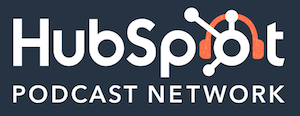
HubSpot Podcast Network is the audio destination for business professionals who seek the best education and inspiration on how to grow a business.
Did you miss our previous article…
https://www.sydneysocialmediaservices.com/?p=5787

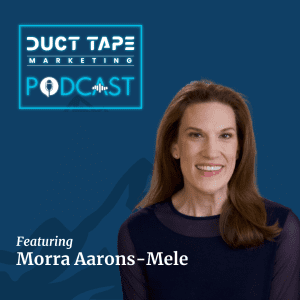 In this episode of the Duct Tape Marketing Podcast, I interview Morra Aarons-Mele. She
In this episode of the Duct Tape Marketing Podcast, I interview Morra Aarons-Mele. She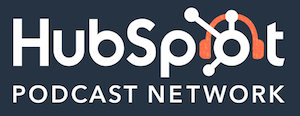
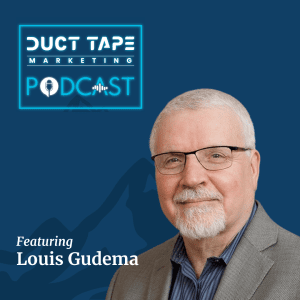 In this episode of the Duct Tape Marketing Podcast, I interview Louis Gudema. Louis is a fractional CMO for B2B companies, and mentors startups at MIT. Previously he founded and grew a marketing agency, and pivoted it into a SaaS company, growing it into one of the top three or four companies in its national market before a successful exit. The first edition of Bullseye Marketing was named One of the Best Marketing Plan Books of All Time by Book Authority. He also has a side hustle as a ghostwriter of business and marketing books.
In this episode of the Duct Tape Marketing Podcast, I interview Louis Gudema. Louis is a fractional CMO for B2B companies, and mentors startups at MIT. Previously he founded and grew a marketing agency, and pivoted it into a SaaS company, growing it into one of the top three or four companies in its national market before a successful exit. The first edition of Bullseye Marketing was named One of the Best Marketing Plan Books of All Time by Book Authority. He also has a side hustle as a ghostwriter of business and marketing books.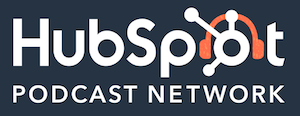
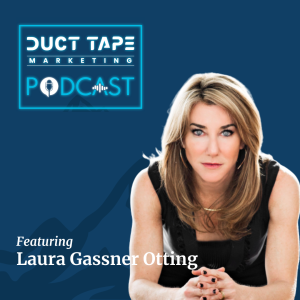 In this episode of the Duct Tape Marketing Podcast, I interview Washington Post Best Selling Author and Motivational Keynote Speaker, Laura Gassner Otting. A frequent contributor to Good Morning America, the TODAY Show, Harvard Business Review, and Oprah Daily. Laura’s 30-year experience is defined by her entrepreneurial edge. She served as a Presidential Appointee in Bill Clinton’s White House, helping shape AmeriCorps.
In this episode of the Duct Tape Marketing Podcast, I interview Washington Post Best Selling Author and Motivational Keynote Speaker, Laura Gassner Otting. A frequent contributor to Good Morning America, the TODAY Show, Harvard Business Review, and Oprah Daily. Laura’s 30-year experience is defined by her entrepreneurial edge. She served as a Presidential Appointee in Bill Clinton’s White House, helping shape AmeriCorps.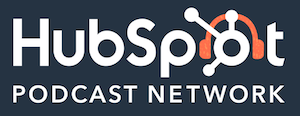
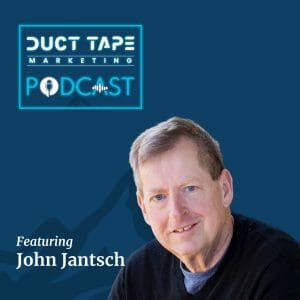 In this episode of the Duct Tape Marketing Podcast, I’m doing a solo show, and I’m gonna talk about how Fractional CMOs are becoming increasingly popular among business owners and marketing agencies.
In this episode of the Duct Tape Marketing Podcast, I’m doing a solo show, and I’m gonna talk about how Fractional CMOs are becoming increasingly popular among business owners and marketing agencies.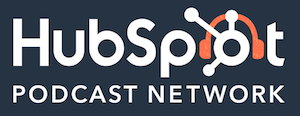 HubSpot Podcast Network is the audio destination for business professionals seeking the best education and inspiration to grow a business.
HubSpot Podcast Network is the audio destination for business professionals seeking the best education and inspiration to grow a business.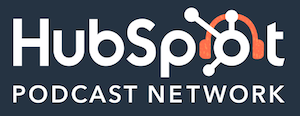 HubSpot Podcast Network is the audio destination for business professionals seeking the best education and inspiration to grow a business.
HubSpot Podcast Network is the audio destination for business professionals seeking the best education and inspiration to grow a business. In this episode of the Duct Tape Marketing Podcast, I interview Stu Heinecke. Stu is
In this episode of the Duct Tape Marketing Podcast, I interview Stu Heinecke. Stu is
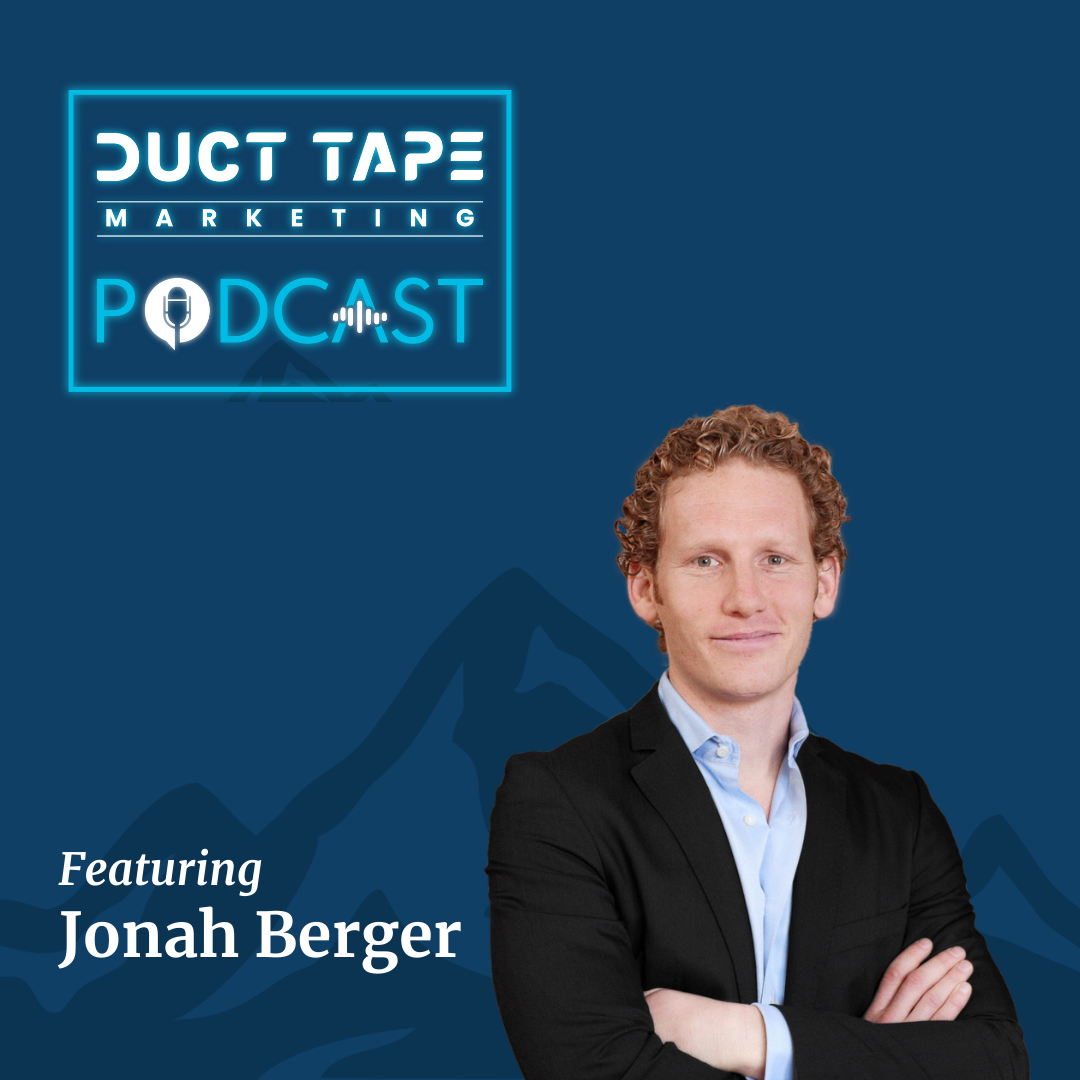 In this episode of the Duct Tape Marketing Podcast, I interview Jonah Berger. Jonah
In this episode of the Duct Tape Marketing Podcast, I interview Jonah Berger. Jonah 
 In this episode of the Duct Tape Marketing Podcast, I interview David Barnett. David is an Author, Speaker, Educator, Consultant, and Business Buy/Sell Process Coach who works with people to help them prepare and sell their businesses privately or buy a business privately or via a business broker.
In this episode of the Duct Tape Marketing Podcast, I interview David Barnett. David is an Author, Speaker, Educator, Consultant, and Business Buy/Sell Process Coach who works with people to help them prepare and sell their businesses privately or buy a business privately or via a business broker.
 In this episode of the Duct Tape Marketing Podcast, I interview Russ Perry. Russ, the founder, and CEO of Design Pickle, is a seasoned creative leader, entrepreneur, author, and thought leader. As a former agency owner, Perry intimately understands the challenges associated with all aspects of creative work and has transformed the creative process through Design Pickle.
In this episode of the Duct Tape Marketing Podcast, I interview Russ Perry. Russ, the founder, and CEO of Design Pickle, is a seasoned creative leader, entrepreneur, author, and thought leader. As a former agency owner, Perry intimately understands the challenges associated with all aspects of creative work and has transformed the creative process through Design Pickle.